

Zitierweise / cite as:
Payer, Alois <1944 - >: Chronik Thailands = กาลานุกรมสยามประเทศไทย. -- Chronik 1891 (Rama V.). -- Fassung vom 2017-01-28. -- URL: http://www.payer.de/thailandchronik/chronik1891.htm
Erstmals publiziert: 2013-09-25
Überarbeitungen: 2017-01-28 [Ergänzungen] ; 2016-02-13 [Ergänzungen] ; 2015-12-26 [Ergänzungen] ; 2015-10-04 [Ergänzungen] ; 2015-06-26 [Ergänzungen] ; 2015-06-04 [Ergänzungen] ; 2015-05-12 [Ergänzungen] ; 2015-03-28 [Ergänzungen] ; 2015-03-11 [Ergänzungen] ; 2015-03-03 [Ergänzungen] ; 2015-02-08 [Ergänzungen] ; 2014-12-21 [Ergänzungen] ; 2014-12-14 [Ergänzungen] ; 2014-11-09 [Ergänzungen] ; 2014-03-06 [Ergänzungen] ; 2013-12-02 [Ergänzungen] ; 2013-09-28 [Ergänzungen]
©opyright: Dieser Text steht der Allgemeinheit zur Verfügung. Eine Verwertung in Publikationen, die über übliche Zitate hinausgeht, bedarf der ausdrücklichen Genehmigung des Herausgebers.
Dieser Text ist Teil der Abteilung
Thailand von
Tüpfli's Global Village Library
ช้างตายทั้งตัวเอาใบบัวปิดไม่มิด
|
Gewidmet meiner lieben Frau Margarete Payer die seit unserem ersten Besuch in Thailand 1974 mit mir die Liebe zu den und die Sorge um die Bewohner Thailands teilt. |
|
Bei thailändischen Statistiken muss man mit allen Fehlerquellen rechnen, die in folgendem Werk beschrieben sind:
Die Statistikdiagramme geben also meistens eher qualitative als korrekte quantitative Beziehungen wieder.
|
1891 - 1899
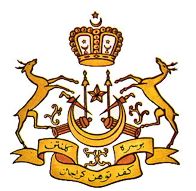
Sultan Mansur Ibni Sultan Ahmad ibni al-Marhum Sultan Ahmad Tengah (1870 - 1899) ist Raja (راجا), ab 1897 Sultan (سلطان) von Kelantan (كلنتن)
Abb.: Lage von Kelantan (كلنتن)
[Bildquelle: Constables Hand Atlas of India, 1893. -- Pl. 59]
"Sultan Mansur Ibni Sultan Ahmad ibni al-Marhum Sultan Ahmad Tengah [Sultan Mandul], Sultan and Yang di-Pertuan Besar of the State of Kelantan.
- b. 1870, second son of Paduka Sri Sultan Ahmad ibni al-Marhum Muhammad, Sultan and Yang di-Pertuan Besar of the State of Kelantan,
- educ. privately.
- Appointed as Heir Presumptive with the title of Raja Muda, 30 September 1887.
- Installed as Heir Apparent and regent for his brother, with the title of Raja Kelantan, 23 September 1890.
- Succeeded on his death, as Yang di-Pertuan, 11 May 1891.
- Granted the title of Phra Visit Bakdiya (Phra Bipitpakdi), 1897.
- Proclaimed as Paduka Sri Sultan, 26 July 1898.
- m. Y.M. Engku Nik binti al-Marham Raja Patani (d. after 1897).
- He d.s.p. at Istana Johar, Kota Bharu, 17 June 1899 (bur. Royal Cemetery, Kampung Langgar)."
[Quelle: http://en.wikipedia.org/wiki/Sultan_of_Kelantan. -- Zugriff am 2015-02-28]
1891

Angesichts der Bedrohung durch Frankreich macht Rama V. folgende Halbbrüder zu High Commissioners (ขาหลวงใหญ่)
- Prinz Sanphasitthiprasong (พลตรี พระเจ้าบรมวงศ์เธอ กรมหลวงสรรพสิทธิประสงค์, 1857 - 1922) - Nakhon Ratchasima (นครราชสีมา)
- Prinz Pracak Sinlapakom (พลตรี พระเจ้าบรมวงศ์เธอ กรมหลวงประจักษ์ศิลปาคม, 1856 - 1924) - Nong Khai (หนองคาย)
- Prinz Phichit Prichakon (พระเจ้าบรมวงศ์เธอ กรมหลวงพิชิตปรีชากร, 1855 - 1909) - Nakhon Champassak (ຈໍາປາສັກ)
Abb.: Lage von Nong Khai (หนองคาย), Champassak (ຈໍາປາສັກ), Nakhon Ratchasima (นครราชสีมา)
[Bildquelle: Scottish Geographical Magazine, 1886]
"In 1891, Prince Sanphasitthiprasong [พลตรี พระเจ้าบรมวงศ์เธอ กรมหลวงสรรพสิทธิประสงค์, 1857 - 1922], the High Commissioner of of Nakhon Ratchasima [นครราชสีมา] was given greater judicial powers than all previous commissioners. Supported by contingents of the regular army, the Prince was responsible for the suppression of banditry in the first class province of Nakhon Ratchasima and in all the outer provinces of the north-east. He set up a court in Nakhon Ratchasima, to which all criminals apprehended by the troops were sent for trial and cases of appeals from the provincial courts were sent for Judgement. He worked with astonishing energy and speed. In one year, from May 1891 to March 1892, he presided over the trials of 897 criminals, of whom 365 were convicted and 512 were released to lack of conclusive evidence. He also listened to 481 appeals, 281 of which he settled." [Quelle: Tej Bunnag [เตช บุนนาค] <1943 - >: The provincial administration of Siam from 1892 to 1915 : a study off the creation, the growth, the achievements, and the implications for modern Siam, of the ministry of the interior under prince Damrong Rachanuphap. -- Diss. Oxford : St. Anthonys College, Michaelmas Term 1968. -- 429 S., Schreibmaschinenschrift. -- S. 113f. -- Faire use]
1891
Prinz Phichit Prichakon (พระเจ้าบรมวงศ์เธอ กรมหลวงพิชิตปรีชากร, 1855 - 1909), der Kommissar von Champassak (ຈໍາປາສັກ), kompensiert den lokalen Adel für seinen Machtverlust, indem der drei Adlige von Ubon Ratchthani [อุบลราชธานี] zu "Supervisory Commisioners" [ข้าหลวงกำกับราชการ] von Roi-et [ร้อยเอ็ด], Suwannaphum [สุวรรณภูมิ] und Yasothon [ยโสธร] macht.
1891
Hungersnot in Lampang (ลำปาง). Aus Bangkok werden große Mengen Reis als Hilfsgut Richtung Lampang geschickt. Sie erreichen nie ihr Ziel.
Abb.: Lage von Lampang (ลำปาง)
[Bildquelle: Scottish Geographical Magazine, 1886]
1891
Das Mahatthai [มหาดไทย] (Ministerium der Nordprovinzen) hat 20 Beamte und 66 Bedienstete.
1891
Es erscheint das offizielle Thai-Thai-Wörterbuch des Erziehungsdepartements (กรมศึกษาธิการ)
พจนานุกรม / กรมศึกษาธิการ
Die Arbeit dazu hat 1884 begonnen. Das Wörterbuch soll die Schreibung von Thai-Wörtern vereinheitlichen und den Gebrauch der Wörter in der "richtigen" Bedeutung sicherstellen.
1891-/1892
Die Schulbuchabteilung des Erziehungsdepartements (กรมศึกษาธิการ) hat 36 Titel im Angebot, darunter
- 6 Pali-Grammatiken
- 6 religiöse Texte
- 16 Schulbücher für weltliche Gegenstände. Die meisten der Schulbücher für Thai kommen von außerhalb
1891/1892
Samut Prakan (สมุทรปราการ): erster Einsatz eines Dampf-Traktors auf Reisfeldern. Es ist ein Misserfolg.
Abb.: Lage von Samut Prakan (สมุทรปราการ)
[Bildquelle: OpenStreetMap. -- Creative Commons Lizenz (Namensnennung, share alike)]
Abb.: Dampftraktoren 1895
[Bildquelle: Wikimedia. -- Public domain]
1891
Erlass: Viehhandel darf nur noch auf öffentlichen, staatlich kontrollierten Viehmärkten stattfinden.
1891
Großfeuer im Chinesenviertel Bangkoks zerstört 269 Gebäude, 9 Tote. Chinesische Geister-Medien hatten das Feuer vorausgesagt und wohl auch gelegt. Die Regierung verbietet daraufhin, von Geistern besessen zu sein.
1891
Abb.: Siamesische Truppe bei Salavan (ສາລະວັນ)
Abb.: Lage von Salavan (ສາລະວັນ)
[Bildquelle: CIA. -- Public domain]
1891

Die Firma Giesecke und Devrient, Leipzig, druckt im Auftrag der Regierung Siams Banknoten. Vertreter der Firma in Bangkok ist Pickenpack, Thies & Co.
Abb.: Logo, 1860
[Bildquelle: Wikimedia. -- Public domain]
"Am 1. Juni 1852 gründeten Hermann Giesecke und Alphonse Devrient in Leipzig eine Buch-, Kupfer- und Steindruckerei unter dem Namen „Giesecke & Devrient“. Schnell entwickelte sich der Banknoten- und Wertpapierdruck zu einem erfolgreichen Geschäftsfeld und wurde bestimmend für das junge Unternehmen. Bereits 1858 zog die Druckerei mit einer eigenen Schriftgießerei in neu erbaute Geschäftsräume in der heutigen Nürnbergerstraße 12 in Leipzig (III). 1923 war G&D maßgeblich am Druck der Rentenmark beteiligt (IV). Die Produktionsanlagen wurden 1943 durch einen alliierten Bombenangriff schwer beschädigt, die Produktion ausgelagert. Das Unternehmen wurde 1948 durch die Sowjetische Militäradministration enteignet und in einen Volkseigenen Betrieb (VEB) umgewandelt. Nach der deutschen Wiedervereinigung erwarb G&D 1991 das ehemalige Stammhaus in Leipzig und gliederte es als Standort für den Wertpapier- und Banknotendruck in den aus München geführten Konzern ein." [Quelle: http://de.wikipedia.org/wiki/Giesecke_%26_Devrient. -- Zugriff am 2015-01-11]
1891
Abb.: Lage von Songkhla (สงขลา) und Kedah (قدح)
[Bildquelle: Constables Hand Atlas of India, 1893. -- Pl. 59]
"Coffee-planting has been attempted by the late Mr. Harrison, who in 1891 planted 35,000 trees at a place thirty miles up the Keda road from Sungkla [สงขลา)] forty-five miles distant from Keda [قدح]. Of these, last year, Mr. Ramsay, his late partner, informed me 30,000 were living. Although there were as yet no berries, the trees looked well, the leaves being in many cases of the unusual length of fourteen inches. The great difficulty here, as elsewhere, is that of labour. The local people will not work, and out of ten villages with which Mr. Harrison contracted for clearing the ground only three fulfilled their engagements. With the other seven he was powerless to deal; there was no legal authority to back him, and the governor dared not and could not do anything. With the present want of coolie regulations, it is impossible to import Kling [= Kalinga =Südostinder / Tamile] or Chinese labour, and the reply of the Siamese Government to representations on the subject is that the present arrangement for labour is good enough, and they do not wish for foreign coolies in the country. If the industry be properly encouraged, the rolling uplands of Sungkla should undoubtedly prove favourable to the coffee plant, as the climate is equable, and the soil, a deep rich loam, is remarkably productive. But the active animosity of local officials, whose interests are against the foreign planter, and the apathy displayed by the central government are not encouraging. Another enemy to planting in the future will be the undergrowth, which springs up whenever the forest has been burnt down for rai [ไร่
, Trockenfeldbau]. The ground is used only one or two seasons, and then the young saplings grow and the deer begin to feed there; to catch them, fire is often again set to the young growth, destroying all but the bamboos, which are consequently ousting the big timber, and which will make clearing an impossibility for future planters.This burning is going on so extensively in the forests of this province that the elephants have all to be sent south to the neighbouring provinces for food."
[Quelle: Smyth, H. Warington (Herbert Warington) <1867-1943>: Five years in Siam : from 1891 to 1896. -- London : Murray, 1898. -- 2 Bde. : Ill ; 21 cm. -- Bd. 2. -- S. 105f.]
1891
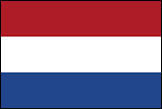
Trinil, Ngawi Regency, Java (Indonesien): Der niederländische Anthropologe und Geologe Eugène Dubois (1858 - 1940) entdeckt das Fragment eines Schädeldachs und einen Zahn, 1892 noch einen Oberschenkelknochen eines Hominiden. Es ist der erste solche Fund in Asien. 1894 nennt Dubois den Hominiden Pithecanthropus erectus (aufrecht gehender Affenmensch). Heute schätzt man das Alter auf 1 Mio. Jahre und meist bezeichnet man diesen Hominiden als Homo erectus javanicus (javanischer aufrecht gehender Mensch).
Abb.: Lage von Trinil
[Bildquelle: OpenStreetMap. -- Creative Commons Lizenz (Namensnennung, share alike)]
Abb.: Die Funde von Dubois
[Bildquelle: Wikipedia. -- Public domain]
1891

Die US-Firma American Express gibt erstmals Traveler Cheques aus. Dies erleichtert den internationalen Personenverkehr sehr.
Abb.: American Express Traveler Cheque 1891
[Bildquelel: American Express. -- Fair use]
1891-01 - 1892-06

Sempronius Hamilton Boyd (1828 – 1894) ist Gesandter der USA in Siam. Er ist um die Moral der Amerikaner in Siam besorgt und arrestiert Amerikaner wegen "immorality", wenn sie mit siamesischen oder chinesischen Frauen zusammenleben. Die Bangkok Times schreibt dazu:
"It is startling to find the representative of America, where every kind of immorality - political, commercial, and social - is so glaring, posing as the knight-errant." [Zitiert in: Americans in Thailand / ed. by Nicholas Grossman. -- Singapore : Didier Millet, 2015. -- 304 S. : Ill. ; 25 cm. -- ISBN 978-981-4385-84-8. -- S. 101]
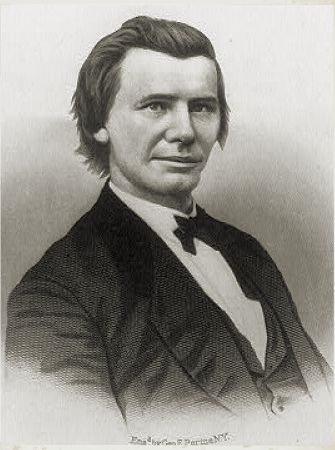
Abb.: Sempronius Hamilton Boyd
"Sempronius Hamilton Boyd (* 28. Mai 1828 bei Nashville, Tennessee; † 22. Juni 1894 in Springfield, Missouri) war ein US-amerikanischer Politiker. Zwischen 1863 und 1871 vertrat er zwei Mal den Bundesstaat Missouri im US-Repräsentantenhaus. Werdegang
Im Jahr 1840 kam Sempronius Boyd mit seinen Eltern nach Missouri, wo sich die Familie auf einer Farm nahe Springfield niederließ. Dort genoss er eine private Schulausbildung. 1849 schloss er sich dem Goldrausch an und zog nach Kalifornien, wo er als Goldsucher und Lehrer arbeitete. 1854 kehrte er nach Missouri zurück. Zwischen 1854 und 1856 war er Gerichtsdiener am Bezirksgericht im Greene County. Nach einem Jurastudium und seiner 1856 erfolgten Zulassung als Rechtsanwalt begann er in Springfield in diesem Beruf zu arbeiten. Im gleichen Jahr wurde er zum Bürgermeister von Springfield gewählt. Zu Beginn des Bürgerkrieges stellte Boyd eine Infanterieeinheit auf und wurde Oberst im Heer der Union. Bis zu seiner Wahl in den Kongress blieb Boyd beim Militär.
Bei den Kongresswahlen des Jahres 1862 wurde Boyd als Unionist im vierten Wahlbezirk von Missouri in das US-Repräsentantenhaus in Washington D.C. gewählt, wo er am 4. März 1863 die Nachfolge von Elijah Hise Norton (1821 - 1914) antrat. Bis zum 3. März 1865 konnte er zunächst eine Legislaturperiode im Kongress absolvieren, während der er Vorsitzender des Committee on Revisal and Unfinished Business war. Diese Zeit war von den Ereignissen des Bürgerkrieges geprägt. Damals schloss sich Boyd der Republikanischen Partei an, deren Bundesvorstand er zwischen 1864 und 1868 angehörte. Im Jahr 1864 war er Delegierter zur Republican National Convention, auf der Präsident Abraham Lincoln (1809 - 1865) zur Wiederwahl nominiert wurde.
Im Jahr 1865 wurde Sempronius Boyd Richter im 14. Gerichtsbezirk von Missouri. Zwischen 1867 und 1874 war er auch am Aufbau und der Führung der Eisenbahngesellschaft Southwest Pacific Railroad beteiligt. Bei den Wahlen des Jahres 1868 wurde er als Republikaner erneut im vierten Distrikt seines Staates in den Kongress gewählt, wo er am 4. März 1869 Joseph J. Gravely (1828 - 1872) ablöste und bis zum 3. März 1871 eine weitere Amtszeit verbrachte. In dieser Zeit wurde der 15. Verfassungszusatz ratifiziert. Boyd war damals Vorsitzender des Ausschusses, der sich mit Ansprüchen aus der amerikanischen Revolutionszeit befasste.
Zwischen 1874 und 1876 leitete Boyd eine Wagenfabrik. Danach praktizierte er als Anwalt. Von Januar 1891 bis Juni 1892 war er als Nachfolger von Jacob T. Child US-amerikanischer Gesandter und Generalkonsul in Siam. Er starb am 22. Juni 1894 in Springfield."
[Quelle: http://de.wikipedia.org/wiki/Sempronius_H._Boyd. -- Zugriff am 2015-04-03]
1891-01-07
Prinz Damrong (ดำรงราชานุภาพ) (1862 -1943) schlägt dem König vor, in jeder Stadt (เมือง) staatliche Schulen einzurichten. Die Kosten pro Stadt würden nicht 320 Baht pro Stadt überschreiten. 1891-02 macht Damrong mit Zustimmung des Königs den Provinzgouverneuren diesen Vorschlag und erhält Zusagen von 20 Städten. Außer in Songkhla (สงขลา) werden diese Zusagen aber nicht in die Tat umgesetzt.
1891-01-25

Le Petit Parisien. Supplément littéraire illustré <Paris, Frankreich>:
Abb.: "Unsere Soldaten in Tonkin [Vietnam]". -- In: Le Petit Parisien. Supplément littéraire illustré <Paris, Frankreich>. -- No 103. -- 1891-01-25
1891-02-06
Eröffnung des neuen Gefängnisses in Bangkok.
Abb.: Zentralgefängnis, Bangkok
[Bildquelle: Twentieth century impressions of Siam : its history, people, commerce, industries, and resources / ed. in chief: Arnold Wright. -- London [etc.] : Lloyds, 1908. -- S. 109]
1891-02-10
Reorganisation des Postwesens
1891-02-17
Per Dekret wird der Lehrplan für Standard III festgelegt. Er besteht aus einer Vertiefung von Standard II (siehe 1886-02-05) sowie
- literarische Grammatik
- Rhetorik
- Poetik (Verse verfassen)
- Sachprosa
- Abfassen von Dialogen
- Bruchzahlen
- Benutzung des Abakus
- Abfassung von Tabellen und Graphiken
In den Lehrplänen für Standard I, II und III fehlen
- Geschichte
- Naturwissenschaften
- Geographie
- Hygiene
- Religion
Diese Fächer gehören nur zum Curriculum weniger Schulen wie Suankulap (โรงเรียนสวนกุหลาบวิทยาลัย) und Suananthalai (โรงเรียนสตรีสุนันทาลัย).
1891-02-22

Telegraphenlinie von Bangkok nach Luang Prabang (ຫຼວງພຣະບາງ).
Abb.: Telegraphenlinie von Bangkok nach Luang Prabang (ຫຼວງພຣະບາງ)
[Bildquelle: OpenStreetMap. -- Creative Commons Lizenz (Namensnennung, share alike)]
1891-02-25
Konkurs der Firma Jucker, Sigg & Co. Verbindlichkeiten: $1.000.000
"Albert Jucker (* 26. August 1844 in Winterthur; † 3. Dezember 1885 in Bangkok) war ein Schweizer Unternehmer und der Gründer des ersten Schweizer Unternehmens in Siam. Biografie
Jucker war der einzige Sohn einer alten Mittelstandsfamilie aus Winterthur. Nach seiner Schulausbildung ging er im Alter von 19 Jahren nach Paris, wo er den internationalen Handel kennenlernen wollte. Er fand eine Anstellung bei Malherbe & Jullien & Co., die hauptsächlich im Im- und Export mit Cochinchina (Vietnam) tätig war und ein Zweigbüro in Saigon unterhielt. Als die Firma 1866 ein weiteres Zweigbüro in Bangkok eröffnete, wurde Jucker als Assistent dorthin gesandt. 1872 wurde er Geschäftsführer in Siam. Er überzeugte seinen Cousin Henry Sigg aus Winterthur, ihm 1873 nach Siam zu folgen.
1882, als in Bangkok die Hundertjahrfeier der Gründung der Chakri-Dynastie gefeiert wurde, reifte in Jucker die Idee, ein eigenes Unternehmen zu gründen. Malherbe und Jullien verkauften ihre Anteile am Zweigunternehmen in Siam an Jucker, der damit Alleinunternehmer wurde. Die neue Firma hiess Jucker & Sigg & Co. und wurde die Vorgängerin des heutigen Unternehmens Berli Jucker. Die Geschäftsräume lagen im alten portugiesischen Viertel des Ortes Santa Cruz (heute Kudichin) am Westufer des Chaophraya. Zusammen mit seinem Cousin stellte Jucker auch zwei weitere Schweizer als Assistenten ein, B. E. Mohn und A. Hoffmann. Jucker & Sigg führten die Geschäfte von Malherbe & Jullien als Kaufleute, Schiffsausrüster und Exporteure von Teakholz in Siam fort. Auch eine grosse Reismühle sowie eine Agentur für Versicherungen und Geldverkehr gehörte zum Geschäft.
Im Alter von 38 war Jucker gut bekannt und angesehen in Siam. Er erhielt Auszeichnungen von König Chulalongkorn von Siam (Rama V.) und Umberto I. von Italien, der ihn auch zum Honorarkonsul von Italien in Siam ernannte und ihm den Titel eines Cavaliere verlieh.
1868 heiratete Jucker Paula da Cruz (1850–1934), eine Siamesin portugiesischer Abstammung katholischen Glaubens. Kinder: Mary (* 1870), Henry (1873–1954), Albert (1880–1936), Edward (1882–1976) und Elise (1885–1970).
Am 3. Dezember 1885 starb Albert Jucker im Alter von 41 Jahren an Cholera. Seine Witwe ging mit den fünf Kindern in die Schweiz nach Winterthur, wo diese eine gute Ausbildung erhielten. Nachdem die Kinder erwachsen waren, kehrte Paula nach Bangkok zurück und lebte bis zu ihrem Tod in einer Residenz in der Surawongse-Strasse."
[Quelle: http://de.wikipedia.org/wiki/Albert_Jucker. -- Zugriff am 2011-10-25]
1891-03-01
Die Eisenbahnlinie nach Korat (โคราช) wird in Auftrag gegeben.
Abb.: Lage von Korat (โคราช)
[Bildquelle: OpenStreetMap. -- Creative Commons Lizenz (Namensnennung, share alike)]
1891-03-04
Eröffnung des Sunandalaya College
1891-03-06

Es erscheint:
Gordon, Robert: The Economic Development of Siam. -- In: Journal of the Society of Arts <London>. -- 39 (1891-03-06). -- S. 283
- 298
1891-03-19 - 1891-03-23

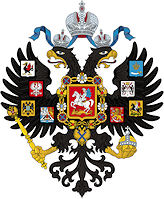
Besuch des russischen Zarewitsch (Царевич, „Zarensohn“) Nikolaus in Siam
Abb.: Zarewitsch Nikolaus II. und Rama V., 1891-03
1891-03-22

Königliche Elefantenjagd in Ayutthaya (อยุธยา).
1891-04-04

Rama V. an Prinz Damrong [ดำรงราชานุภาพ, 1862 -1943]
"As it is necessary to know about European methods of administration, because the Europeans are hundreds of times more experienced than we are in this activity, so we must employ someone, who knows about these methods, to lay down the new administrative regulations."
"I know that you read English and that your organisation of the Department of Education is exemplary, I therefore want you to help to plan the reorganisation of the Ministry of the North, to point out problems which you suspect will hinder its progress, and to solve them by the adaptation of European methods to Siamese administration."
[Quelle: Tej Bunnag [เตช บุนนาค] <1943 - >: The provincial administration of Siam from 1892 to 1915 : a study off the creation, the growth, the achievements, and the implications for modern Siam, of the ministry of the interior under prince Damrong Rachanuphap. -- Diss. Oxford : St. Anthonys College, Michaelmas Term 1968. -- 429 S., Schreibmaschinenschrift. -- S. 132. -- Faire use]
1891-04-19

Einweihung der restaurierten katholischen St. Josefs-Kirche (วัดนักบุญยอแซฟ) in Ayutthaya (อยุธยา)
Abb.: St. Josefs-Kirche (วัดนักบุญยอแซฟ), Ayutthaya (อยุธยา)
[Bildquelle: Eric. -- http://www.flickr.com/photos/qsimple/5844025339/. -- Zugriff am 2011-10-26. -- Creative Commons Lizenz (Namensnennung, keine kommerzielle Nutzung, share alike)]
1891-05-02

Bangkok: Der deutsche Ministerresident Peter F. Kempermann (1845 - 1900) gründet den Deutschen Klub.
1891-05-23
Tod durch Cholera von Luang Akkani Narumit (aka Chitr Chitrakani / Francis Chit) (หลวงอัคนีนฤมิตร - จิตร จิตราคนี - ฟรานซิส จิตร, 1830 - 1891), der das erste Fotostudio Siams betrieb. Das Studio befand sich auf einem Floß auf dem Chao Phraya.
Abb.: Chitr Chitrakani (จิตร จิตราคนี)
1891-06 - 1894-12-31

Jean-Marie Antoine Louis de Lanessan (1843 - 1919) ist Generalgouverneur von Französisch-Indochina
Abb.: Jean-Marie Antoine Louis de Lanessan
[Bildquelel: Les hommes d'aujoud'hui]
"Jean Marie Antoine de Lanessan (13 July 1843 - 1919) was a French statesman and naturalist. Biography
De Lanessan was born in Saint-André-de-Cubzac in the Gironde department of France and entered the French Navy in 1862, serving on the East African and Cochin-China stations in the medical department until the Franco-Prussian War, when he resigned and volunteered for the army medical service. He then completed his studies, taking his doctorate in 1872.
Elected to the Municipal Council of Paris in 1879, de Lanessan declared in favor of communal autonomy and joined with Henri Rochefort in demanding the erection of a monument to the Communards; but after his election to the Chamber of Deputies for the 5th arrondissement of Paris in 1881 he gradually veered from the extreme Radical party to the Republican Union, and identified himself with the cause of colonial expansion.
A government mission to the French colonies in 1886-1887, in connection with the approaching Paris exhibition, gave him the opportunity of studying colonial questions, on which, after his return, he published three works: La Tunisie (Paris, 1887); L'Expansion coloniale de la France (ib., 1888), L'Indo-Chine francaise (ib., 1889). In 1891 he was made civil and military governor of French Indochina, where his administration, which led to open rupture with Admiral Fournier, was severely criticized. Nevertheless he consolidated French influence in Annam and Cambodia, and secured a large accession of territory on the Mekong River from the kingdom of Siam. He was recalled in 1894, and published an apology for his administration (La Colonisation francaise en Indo-Chine) in the following year.
In the Waldeck-Rousseau cabinet of 1899 to 1902 he was Minister of Marine, and in 1901 he secured the passage of a naval programme intended to raise the French navy during the next six years to a level befitting the place of France among the great powers. At the general election of 1906 he was not re-elected. He was political director of the Siècle, and president of the French Colonization Society, and wrote, besides the books already mentioned, various works on political and biological questions.
The standard author abbreviation Laness. is used to indicate this individual as the author when citing a botanical name.[1]"
[Quelle: http://en.wikipedia.org/wiki/Jean_Marie_Antoine_de_Lanessan. -- Zugriff am 2014-12-14]
1891-07 - 1892-03-24
Prinz Damrong (ดำรงราชานุภาพ) (1862 -1943) reist nach

- Italien

- Frankreich

- Großbritannien

- Deutschland

- Dänemark

- Russland

- Osmanisches Reich (Türkei)

- Osmanisches Reich (Ägypten)
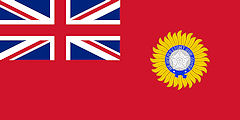
- British India
Abb.: Lage der Hauptstädte der von Prinz Damrong besuchten europäischen Länder
[Bildquelle: The Historical Atlas / William R. Shepherd, 1911]
1891-07-16
Rama V. macht ersten Spatenstich für Eisenbahn nach Paknam (ปากน้ำ; heute: Samut Prakan - สมุทรปราการ)
Abb.: Lage von Paknam (ปากน้ำ)
[Bildquelle: OpenStreetMap. -- Creative Commons Lizenz (Namensnennung, share alike)]
1891-08-21
Bangkok Times:
"The Oriental Hotel has electric lights in every room as of Wednesday last."
Abb.: Lage des Oriental Hotel
[Bildquelle: OpenStreetMap. -- Creative Commons Lizenz (Namensnennung, share alike)]
1891-08-25

Erstmals wird elektrische Energie mit Hochspannungs-Drehstrom übertragen: von Lauffen nach Frankfurt /M. ("Lauffener Übertragung"). Damit beginnt die Fernübertragung von Wechselstrom über große Strecken.
Abb.: Strecke der Drehstromübertragung Lauffen - Frankfurt
[Bildquelle: NordNordWest / Wikimedia. -- GNU FDLicense]
Abb.: Drehstromgenerator in Lauffen 1891
[Bildquelle: Wikimedia. -- Public domain]
1891-09
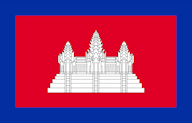

Prinz Preah Ang Mechas Norodom Duongchak (Duong Chacr), (1861 - 1897) von Kambodscha flieht aus der Haft nach Bangkok. König Norodom I ( ព្រះបាទនរោត្តម) (1834 – 1904) von Kambodscha hatte diesen, seinen Sohn auf Druck Frankreichs inhaftiert.
"If he [König Norodom I ( ព្រះបាទនរោត្តម)] showed favor to any one son, it appeared to be towards Prince Duong Chacr [1861 - 1897], who had been active against the French in the rising of 1885-1886. Two years later, a new French representative in Cambodia, Vernéville [Albert Luis Comte Huyn de Vernéville (1845–1909)], regarded Duong Chacr as a "dark cloud on the horizon." Duong Chacr’s talents and intelligence were the source of Vernéville’s concern. The prince’s mother, Khun Sancheat Bopha, had earlier been a member of Ang Duong’s [ព្រះបាទ អង្គ ឌួង (1796 – 1860)] female household and was, again according to Vernéville, a supporter of Siamese interests in the court with considerable influence over Norodom. Apparently in response to Verneville’s urgings, Norodom abandoned his support of Duong Chacr and placed the prince in chains. Alienated from his father, the prince fled to Bangkok, from where he addressed a letter of complaint to Le Myre de Vilers [Charles LeMyre de Vilers (1833-1918) ], the former governor of Cochinehina. Next he travelled to France to further press his case, alleging mistreatment both by his father and by Resident Superior de Vernéville. At the same time he argued that a financial subvention, promised to him by the French government, had not been paid. Within a few months of his arrival in Paris, in June 1893, Duong Chacr was an embarrassment to the French government. His father was persuaded to authorize the prince’s exile, and in August 1893, Duong Chacr was arrested after a violent scene in the Left Bank area [Rive gauche] of Paris. He was interned in Algeria, remaining there until his death in 1897 despite his pleas for exile in a climate similar to that of his own land."
[Übersetzt in: Osborne, Milton E.: The French presence in Cochinchina and Cambodia : rule and response (1859-1905). -- Bangkok : white Lotus, 1997. -- 379 S. : Ill. ; 20 cm. -- ISBN 974-8434-00-1. -- "First published by Cornell Univ. in 1969". -- S. 234]
1891-09-10

The Graphic : an illustrated weekly newspaper <London, Großbritannien>:
Abb.: "Siam and the Siamese". -- In: The Graphic : an illustrated weekly newspaper <London, Großbritannien>. -- 1891-09-10. -- S. 341
1891

Die Schweizer Armee erhält von der Messermanufaktur Wester & Co. , Solingen (Deutschland) die ersten 15.000 Taschenmesser Modell 1890 ("Schweizer Offiziers- und Sportmesser") geliefert.
Abb.: Modell 1890
[Bildquelle: Cutrofiano / Wikimedia. -- GNU FDLicense]
1891-10
John Joseph Lillie gibt die Zeitung Siam Free Press heraus.
Abb.: Titelleiste 1906
"THE SIAM FREE PRESS.'
The Siam Free Press, the first Radical newspaper ever published in Siam was established in the year 1891 by the late Mr. John Joseph Lillie, a journalist of much spirit, whose fearless outspokenness led to actions for libel being taken against the paper, and eventually, in 1895, to his expulsion from the country. Some of the cases brought against him were, indeed, subject-matter for discussion in the British House of Commons, the political relations between Great Britain, France, and Siam being at that time somewhat strained. From Mr. Lillie the paper passed into the hands of a French company, who, however, have always committed its conduct to Britishers. Mr. J. Ward succeeded to the editorial chair under the new regime, and remained in Siam for two years, relinquishing the appointment to take up that of editor of the Japan Times. Mr. Ward subsequently went to Manchuria as a war correspondent, and at the conclusion of the campaign published a book on the Russo-Japanese War. For a few months the Free Press was edited by Mr. E. Martin ; then, in 1896, Mr. O'Leary Dempsey assumed the editorial responsibilities, and has had charge of the paper up to the present day.
Originally the Free Press was a comparatively small newspaper, published only in English ; it has now been increased to three times its original size, and contains news in English, French, and Siamese.
Mr. O Leary Dempsey, who has spent about eighteen years in the tropics, is an Irishman, and was educated at the De La Salle College, Queen's County. He afterwards became a professor at St. Joseph's School, Singapore, where he had charge of a special class, several of his pupils obtaining Queen's Scholarships. In 1893 he took up a position in the Assumption College, Bangkok, as head English professor, and here also his pupils distinguished themselves by obtaining several scholarships given by his Majesty the King of Siam."
[Quelle: Twentieth century impressions of Siam : its history, people, commerce, industries, and resources / ed. in chief: Arnold Wright. -- London [etc.] : Lloyds, 1908. -- S. 297.]
1891-10-03

Das französische Sous-secrétariat des colonies gibt sich empört darüber, dass siamesische Truppen ein eine französisch-vietnamesische Truppe festgenommen hatten, die nach Tung Chiang Kham (เชียงคำ) eingedrungen war. Frankreich besetzt als Strafmaßnahme Ailao. Der französische Resident in Kambodscha besetzt als Strafmaßnahme die siamesische Insel Samit (កោះស្មាច់).
Abb.: Lage der Insel Samit (កោះស្មាច់)
[Bildquelle: OpenStreetMap. -- Creative Commons Lizenz (Namensnennung, share alike)]
1891-10-16
Tod von Phraya Sri Soonthorn Woharn (พระยาศรีสุนทรโวหาร = น้อย อาจารยางกูร, geb. 1822). Er hat Schulbücher für die Thai-Sprache verfasst.
Abb.: Phraya Sri Soonthorn Woharn (พระยาศรีสุนทรโวหาร = น้อย อาจารยางกูร) und von ihm verfasste Schulbücher
[Bildquelle: ศกดา ศิริพันธุ์ = Sakda Siripant, 2012. -- S. 236. -- Fair use]
1891-10-26

Der französische Außenminister Alexandre Félix Joseph Ribot (1842 - 1923) erklärt im Parlament die Gebietsansprüche Frankreichs, wie sie ab jetzt französische Politik sind:
Abb.: Alexandre Félix Joseph Ribot (Dreyfus-Affaire)
[Bildquelle: A. Lemot. -- In: Le Pélerin (katholische Zeitung). -- 1898]
Abb.: Gebietsansprüche Frankreichs: alles östlich des Mekong (មេគង្គ / แม่น้ำโขง / ແມ່ນ້ຳຂອງ / မဲခောင္မ္ရစ္)
'Toute la partie {du territoire} située sur la rive gauche [du Mékong] doit être réservée à l'influence française.' [Zitiert in: Tuck, Patrick J. N.: The French wolf and the Siamese lamb : the French threat to Siamese independence, 1858-1907. -- Bangkok : White Lotus, 1995. -- 434 S. : Ill. ; 22 cm. -- ISBN 974-8496-28-7. -- S. 362, Anm. 57]
1891-11

Prinz Damrong Rajanubhab (ดำรงราชานุภาพ) (1862 -1943) wird vom russischen Zaren Alexander III. (Алекса́ндр III Алекса́ндрович, 1845 - 1894) in dessen Sommerresidenz, dem Liwadija-Palast (Лівадійський палац / Ливадийский дворец) bei Jalta (Ялта), empfangen. Prinz Damrong überbringt dem Zaren ein Schreiben von Rama V. sowie den Chakri-Orden (เครื่องขัตติยราชอิสริยาภรณ์อันมีเกียรติคุณรุ่งเรืองยิ่งมหาจักรีบรมราชวงศ์).
Abb.: Lage des Liwadija-Palasts (Лівадійський палац / Ливадийский дворец)
[Bildquelle: OpenStreetMap. -- Creative Commons Lizenz (Namensnennung, share alike)]
Abb.: Alexander III. (Алекса́ндр III Алекса́ндрович)
[Bildquelel: Constantine von Grimm (1845-1896). -- In: Vanity fair. -- 1884-10-11. -- Public domain]
1891-11-23

Prinz Damrong Rajanubhab (สมเด็จพระเจ้าบรมวงศ์เธอ พระองค์เจ้าดิศวรกุมาร กรมพระยาดำรงราชานุภาพ) wird vom osmanischen Sultan Abdülhamid II(عبد الحميد ثانی ) empfangen.
Abb.: Lage der osmanischen Hauptstadt Konstantinopel (قسطنطینیه, heute: Istanbul)
[Bildquelle: OpenStreetMap. -- Creative Commons Lizenz (Namensnennung, share alike)]
Abb.: Die siamesische Delegation vor dem Sultanspalast, 1891
1891-12-04
Ausbruch aus dem Bangkoker Gefängnis. Vier Gefangene werden erschossen.
1891-12-12
Auftragvergabe für den Bau einer Bahnlinie von Bangkok nach Korat (โคราช) an die Firma Messrs. Murray Campbell & Co.
Abb.: Eisenbahnlinie Bangkok - Korat (โคราช)
[Bildquelle: Twentieth century impressions of Siam : its history, people, commerce, industries, and resources / ed. in chief: Arnold Wright. -- London [etc.] : Lloyds, 1908. -- Vortitelblatt]
"Some time before this little plunge into railway speculation was made by Siam another, and far more important, enterprise was undertaken. This was the construction of a line, 165 miles in length, from the capital to Korat. The course of this line for the first 80 miles is through a flat country mostly covered with rice-fields. Then for 32 miles the line is carried through a thickly-wooded, hilly tract. The last 53 miles of the railway are over a plateau. On the whole, it was a project which carried with it no great engineering difficulty. The contract was given out on December 12, 1891, to Mr. G. Murray Campbell (of the firm of Messrs. Murray Campbell & Co.), and the first sod was cut by the king on March 9th following. Subsequently difficulties arose between the Government and the contractors, and owing to the official obstruction and the consequent delays a claim was lodged by the latter for damages. There were arbitration proceedings in London over the dispute, with the result that Messrs. Murray Campbell & Co. were awarded a considerable sum as compensation." [Quelle: Arnold Wright in: Twentieth century impressions of Siam : its history, people, commerce, industries, and resources / ed. in chief: Arnold Wright. -- London [etc.] : Lloyds, 1908. -- S. 70]
1891-12-31

Tod von Prinz Si Votha (សិរីវត្ថា) (geb. ca. 1841) von Kambodscha.
"Si Votha (also spelled Si Vattha) (c. 1841 - 31 December 1891) was a Cambodian prince who was briefly a contender for the throne. He spent his entire life fighting his half brother King Norodom for the throne. Si Votha was a grandson of King Ang Eng (1772–1796) and a son of King Ang Duong (ព្រះបាទ អង្គ ឌួង, 1786 - 1860). His biographical notes only record that he had a daughter named Neak Ang Mechas (Princess) Ang Duong Rath Votha. Si Votha had two half-brothers, Norodom (ព្រះបាទនរោត្តម, 1834 - 1904) and Sisowath (ព្រះបាទស៊ីសុវតិ្ថ, 1840 - 1927) of Cambodia, with Norodom being the king's chosen heir. Upon King Ang Duong's death, a succession struggle ensued, with Si Votha attempting to take power while his half brother Norodom was occupied with a rebellion, eventually Norodom gained the upper hand when he gained the backing of Sisowath.
RebellionWhen Norodom was officially crowned king in 1864 in a joint coronation ceremony supervised by the French and Siamese officials, Si Votha once again made no secret of his intention to lay claim to the Cambodian throne. Norodom's throne would have been extremely precarious without French support. Sisowath would likely have adopted the same attitude as Si Votha if the Siamese king had allowed him to leave Bangkok. Si Votha's long history of opposition to Norodom, which led him to lead a life of discomfort in the most isolated regions of the kingdom, suggests some deep personal antagonism between the two princes.
During the 1870s, taking advantage of a new uprising against Norodom's authority, Si Votha swiflty returned to Cambodia from Thailand. Begging the pardon of the king of Siam for his unauthorized departure, Si Votha left Bangkok, swiftly passed through Battambang (ក្រុងបាត់ដំបង), and travelled onward to the higher region of the Mekong (មេគង្គ). He had little difficulty in quickly raising a large band of supporters and began to harry the officials loyal to King Norodom. He besieged the provincial capital at Kampong Thom (ក្រុងកំពង់ធំ) and went through the turbulent province of Kampong Svai (ស្រុកកំពង់ស្វាយ). Forces dispatched under Norodom's orders failed to apprehend him. As late as 1876, Si Votha remained in revolt, striking at an outpost of Norodom's government, and slipping back to his sanctuary among the Stiengs (Xtiêng), one of the tribal groups on the fringes of Cambodian society.
The French refused to help King Norodom put down Si Votha's revolt until the king concluded a treaty which advocated several reforms. By January 1877, the treaty was concluded and on 15 January, King Norodom proclaimed a series of reforms under the new treaty. In return, the French now bent their efforts to defeating Si Votha's uprising. Si Votha's uprising lasted until 1885-1886. It was Norodom's prestige that ultimately brought Si Votha's resistance to an end. Si Votha, lurking on the northeastern boundaries of the kingdom, was a nuisance but nothing more.
After a lifetime of dissidence, Prince Si Votha died in December 1891. After the failure of his efforts in 1885-1886, his followers became fewer, dwindling to a few companions by the time he died. In the closing years of his life, Si Votha entered into hesitant and inconclusive negotiations with the French. Having grown tired of living amongst the less civilized hilltribe people in the jungle of northeastern Cambodia, Si Votha eventually submitted to the French. However, he strongly emphasized his refusal to submit to his half-brother, King Norodom.
FailureThe French, who were attempting to expand their influence in Cambodia at the time, were pleased by Si Votha's defeat, as he had been an outspoken critic of European colonialism in the area. Si Votha became something of a figurehead for resistance against the French. Si Votha's rebellion was largely unsuccessful, however, and in 1887, Cambodia was incorporated in the French-controlled Indochinese Union.
Si Votha came to symbolise the first fight against the French colonial rule in Cambodia. But his rebellion was largely born out of jealousy and animosity toward his half brother King Norodom, rather than a desire for the independence of his country from France. During his time he was never considered an independence fighter but rather a rebellious usurper of the Cambodian throne."
[Quelle: http://en.wikipedia.org/wiki/Si_Votha. -- Zugriff am 2014-12-21]
ausführlich: http://www.payer.de/thailandchronik/ressourcen.htm
Phongpaichit, Pasuk <ผาสุก พงษ์ไพจิตร, 1946 - > ; Baker, Chris <1948 - >: Thailand : economy and politics. -- Selangor : Oxford Univ. Pr., 1995. -- 449 S. ; 23 cm. -- ISBN 983-56-0024-4. -- Beste Geschichte des modernen Thailand.
Ingram, James C.: Economic change in Thailand 1850 - 1870. -- Stanford : Stanford Univ. Pr., 1971. -- 352 S. ; 23 cm. -- "A new edition of Economic change in Thailand since 1850 with two new chapters on developments since 1950". -- Grundlegend.
Akira, Suehiro [末廣昭] <1951 - >: Capital accumulation in Thailand 1855 - 1985. -- Tokyo : Centre for East Asian Cultural Studies, ©1989. -- 427 S. ; 23 cm. -- ISBN 4896561058. -- Grundlegend.
Skinner, William <1925 - 2008>: Chinese society in Thailand : an analytical history. -- Ithaca, NY : Cornell Univ. Press, 1957. -- 459 S. ; 24 cm. -- Grundlegend.
Mitchell, B. R. (Brian R.): International historical statistics : Africa and Asia. -- London : Macmillan, 1982. -- 761 S. ; 28 cm. -- ISBN 0-333-3163-0
Smyth, H. Warington (Herbert Warington) <1867-1943>: Five years in Siam : from 1891 to 1896. -- London : Murray, 1898. -- 2 Bde. : Ill ; cm.
ศกดา ศิริพันธุ์ = Sakda Siripant: พระบาทสมเด็จพระจุลจอมเกล้าเจ้าอยู่หัว พระบิดาแห่งการถ่ายภาพไทย = H.M. King Chulalongkorn : the father of Thai photography. -- กรุงเทพๆ : ด่านสุทธา, 2555 = 2012. -- 354 S. : Ill. ; 30 cm. -- ISBN 978-616-305-569-9